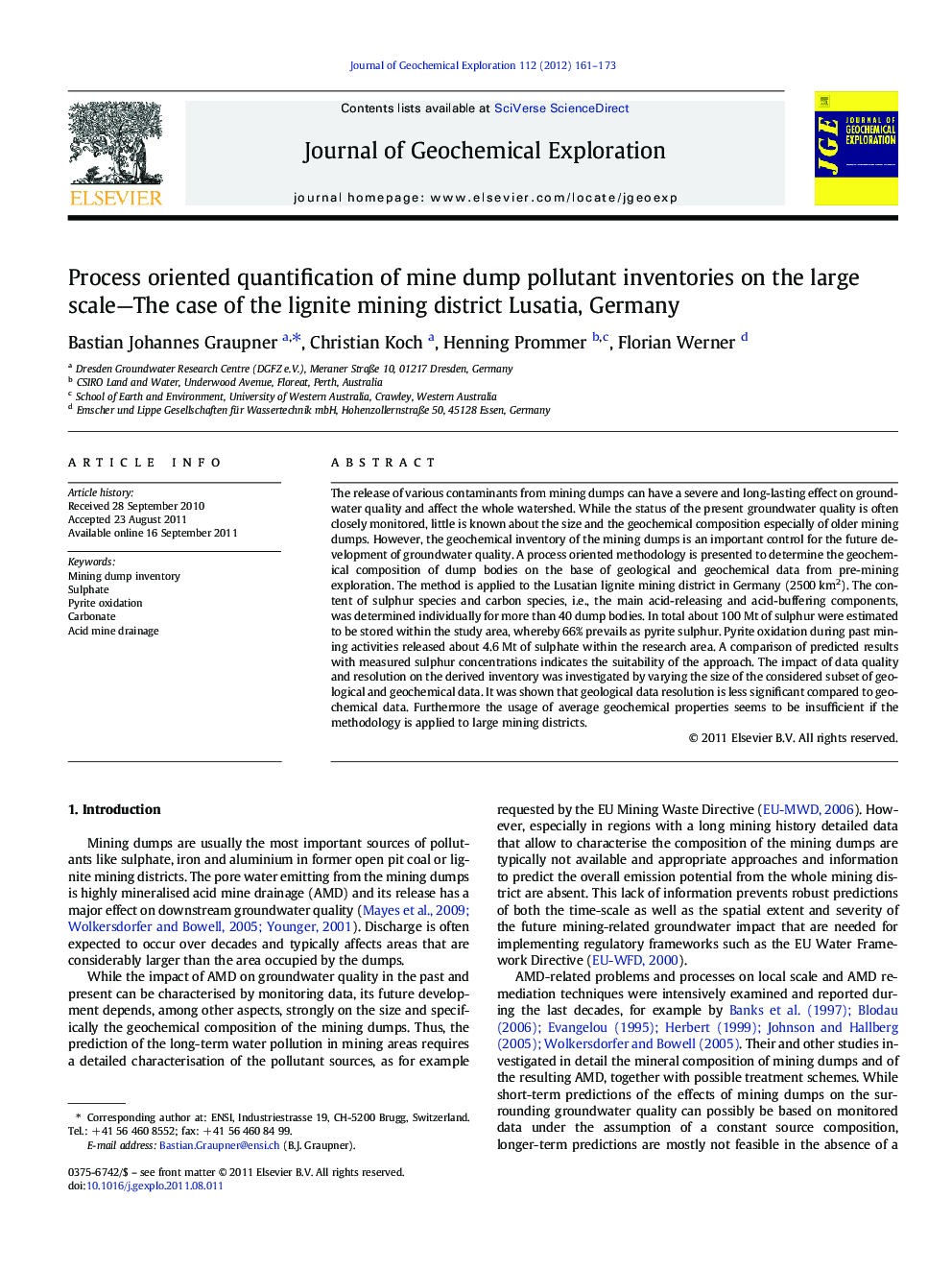| Article ID | Journal | Published Year | Pages | File Type |
|---|---|---|---|---|
| 4457760 | Journal of Geochemical Exploration | 2012 | 13 Pages |
The release of various contaminants from mining dumps can have a severe and long-lasting effect on groundwater quality and affect the whole watershed. While the status of the present groundwater quality is often closely monitored, little is known about the size and the geochemical composition especially of older mining dumps. However, the geochemical inventory of the mining dumps is an important control for the future development of groundwater quality. A process oriented methodology is presented to determine the geochemical composition of dump bodies on the base of geological and geochemical data from pre-mining exploration. The method is applied to the Lusatian lignite mining district in Germany (2500 km2). The content of sulphur species and carbon species, i.e., the main acid-releasing and acid-buffering components, was determined individually for more than 40 dump bodies. In total about 100 Mt of sulphur were estimated to be stored within the study area, whereby 66% prevails as pyrite sulphur. Pyrite oxidation during past mining activities released about 4.6 Mt of sulphate within the research area. A comparison of predicted results with measured sulphur concentrations indicates the suitability of the approach. The impact of data quality and resolution on the derived inventory was investigated by varying the size of the considered subset of geological and geochemical data. It was shown that geological data resolution is less significant compared to geochemical data. Furthermore the usage of average geochemical properties seems to be insufficient if the methodology is applied to large mining districts.
► The sulphur and calcite composition was determined for a lignite mining district. ► Primary pyrite oxidation is responsible for the release of ~ 4.6 Mt of sulphate sulphur. ► Geochemical data resolution is the most important factor for inventory calculations. ► Averaged geochemical properties are insufficiently accurate for large mining districts.
